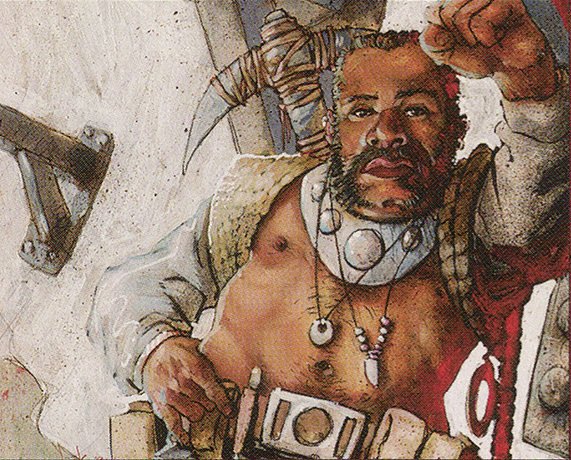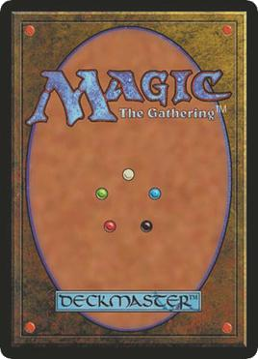 Art by Jock
Art by Jock BLINK
BLINK
‘Blink’, also called ‘Flicker’, is a deck archetype that temporarily exiles its own permanents and brings them back into play for the purposes of re-triggering their enters-the-battlefield abilities (ETB), getting repeated value.
The two main components to this archetype are running enough creatures with the text “when this creature enters the battlefield” and cards that allow them to leave the battlefield and return to trigger that effect again.
By repeatedly blinking such creatures, they are able to accumulate a significant degree of card and mana advantage over other players to easily find and deploy much larger cards with more impactful abilities.
 REANIMATOR
REANIMATOR
Reanimator is a deck archetype known for putting big and powerful creature cards into their graveyard, then using cheap spells or abilities to return those creatures to the battlefield in order to avoid prohibitive mana costs.
There are three main components to any reanimator strategy: creatures to reanimate, the spells that reanimate them, and a reliable way of putting creatures into a graveyard, usually looting spells (draw and then discard cards).
 SACRIFICE AGGRO
SACRIFICE AGGRO
“Aggrostocrats” decks seek to sacrifice its own creatures, especially many low-cost and/or token creatures, to accumulate game-winning benefits. Here, you want to win fast and attack and ping your opponent with everything you have, even when they die.
This archetype uses a combination of sacrifice outlets and cards that trigger when their creatures enter and/or leave the battlefield.
 STOMPY
STOMPY
If you like smashing face, then Gruul Midrange is the deck for you. This is a creature based red and green deck that uses bigger, ahead-of-the-curve creatures to overrun your opponents quickly rather than going wide with smaller creatures.
Ramp your mana on your first turns to cast as soon as possible your big threats. You may also opt to be a little bit more aggressive deck playing cheap red creatures, cleaning the board for your beaters with burn spells, or dealing those last points of damage to the face.
 +1/+1 COUNTERS
+1/+1 COUNTERS
Turn your creatures into major threats increasing their power and toughness with as many +1/+1 counters as you could distribute on them.
This is a midrange deck focused on building a big board presence to overrun your opponents.
 SACRIFICE MIDRANGE
SACRIFICE MIDRANGE
This deck has a lot of overlap with the Red-Black version but it's not so fast, but more controlling, and tries to generate more value in terms of life and resources. White provides tons of creature tokens while black brings more and bigger payoffs.
Your lifegain triggers whenever a creature dies will make the difference in most games.
 SPELLSLINGER
SPELLSLINGER
‘Spellslinger’ is a term for decks that focus primarily on instant and sorceries. They often contain a mix of low-cost spells that may be cast in quick succession as well as high-cost, powerful spells that many other archetypes may find difficult to cast. Spellslinger decks often contain similarities to control strategies, though they are not a prerequisite for this archetype.
Cantrips, as well as other card draw spells, help your deck maintain a steady influx of instants and sorceries that will produce consistent synergy with other cards in the deck, such as cards with abilities that trigger when instants and sorceries are cast.
These cards that trigger with your spells can provide you with many additional benefits and even may also be your deck’s primary win condition.
 GRAVEYARD VALUE
GRAVEYARD VALUE
Death is not an end but just a new beginning. Use your graveyard for sweet recursive value. You are setting up an engine to grind out a long game, or dumping things in the yard to use as your second hand.
This deck is good at not running out of resources. How? By utilizing the graveyard to keep getting back the resources. The opponent can kill your creatures, but you can reanimate them. The opponent can stop your spells but you can regrow them. No matter what answers your opponent has, this archetype keeps bringing back threats.
 TOKENS
TOKENS
A token deck focuses on token-producing cards that can create a large number of tokens for a low cost to overwhelm your opponent. This strategy usually take the form of an aggro deck, using a high density of creatures, commonly paired with effects that increase their power, to defeat the enemy with combat damage.
This can allow you to spend very few cards and resources to establish a much larger board presence than your opponent.
Once you have assembled a large number of tokens, you commonly use effects that will make those tokens more powerful in combat often with ‘anthems’ (cards that provide a power and toughness boost to each creature).
 TEMPO
TEMPO
This deck attempts to deploy quick and aggressive threats while protecting them with light permission and disruption long enough to win. You are accelerating your own path to victory while, at the same time, slowing the opponent.
This can be achieved by playing multiple efficient, impactful cards each turn, outpacing your opponent by volume. You can force their mana to go to waste each turn, denying them meaningful ways to spend it or simply countering everything they do, hopefully while your cheap impactful threats get the job done on an empty board.
Control tries to slow the entire tempo of the game to a crawl, whereas Tempo decks try to expedite their victory much earlier in the game. Think of Tempo decks, in a way, as Control decks that try to do their winning during the early stages of the game, rather than in the later stages.
 DEATH & TAXES
DEATH & TAXES
Death, taxes, and white weenie.
 SABOTEURS
SABOTEURS
 DEVOTION
DEVOTION
 BURN
BURN
 SPROUT SWARM (TOKENS)
SPROUT SWARM (TOKENS)
Sprout Swarm seems to be a pretty innocuous card, but it's an awesome payoff and also an enabler to build an army of Saprolings with just a single card and close the game. The card is an easy P1p1.
You may build a deck around it with many cards. Guttersnipe, too? That seems like a sweet combo.

